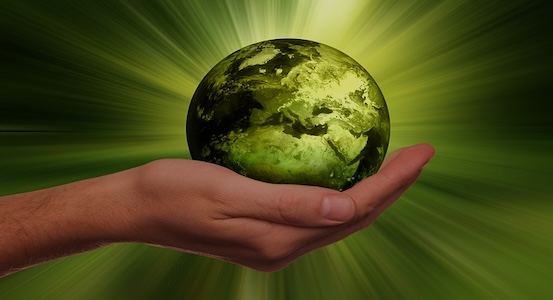
Parking It in All 50
November 10, 2023
Wheeling into December
December 1, 2023Taking Fewer Mulligans

Trying to Make the Green…with No Mulligans
The Material Handling Industry’s 2023 version of its annual industry report is titled: “The Responsible Supply Chain: Transparency, Sustainability, and the Case for Business.”
The report ends with a consensus that a central business goal is “‘walking the walk’ when it comes to meeting its targets for innovation, transparency and sustainability. Only then can your supply chain become more resilient, thus reducing the potential impact from future disruptions.”
The document is seasoned with ideas from material handling on mitigating future disruptions. It’s not just growth anymore. Working through glitches has always been part of a reasonable business plan. After a pandemic that contributed to bottlenecks at the ports and a supply chain impacted by large global shifts, there’s an emphasis on preventive measures.
It’s not just the glitch prevention.
“Supply chain companies are under increasing pressure to become more environmentally responsible and sustainable. In fact, nearly half of this year’s survey respondents (48%) say they face increased influences to adopt a more sustainable supply chain (Figure 1). The pressure is coming from every angle, including consumers, regulators, industry groups, traditional and social media, and other stakeholders that increasingly expect brands and their supply chains to adhere to their own high standards.”
How do they intend to get there? Top focus areas for sustainability:
- electrification (40%)
- natural resource management (29%)
- water usage (27%)
- transition to renewables (27%)
Businesses don’t exist in a bubble. So much of material handling is interconnected. To get that widget in your hands, the widget needs to be sourced, transported, formed, transported again, and often distributed multiple times before you touch it.
With reactive pressure and proactive strategy, reducing greenhouse gas (GHG) emissions has become a key challenge for the supply chain. The transportation industry is central to so much of the chain. From the report:
Emissions from supply chains can account for over 90% of a firms’ GHG emissions. According to the International Energy Agency, transport accounts for 23% of global CO2 emissions. Also, the International Transport Forum estimates that freight accounts for more than 40% of all transport CO2. As such, environmental sustainability and responsibility has become an imperative for supply chains.”
What’s the goal here? Achieving net zero emissions.
We’ve long been interested in the ways our transportation industry is rolling in that sustainable direction. Again, such things don’t happen in a bubble. Sometimes good ideas need encouragement.
